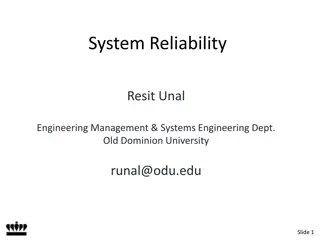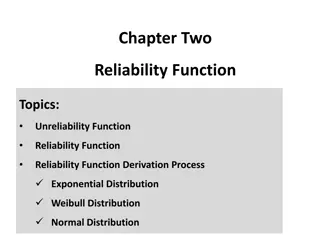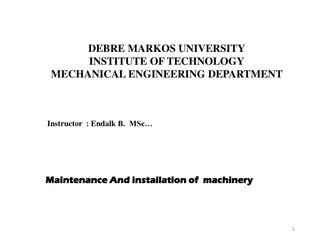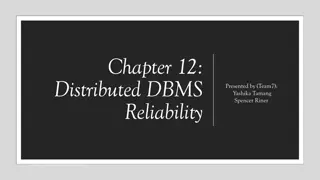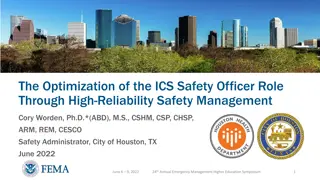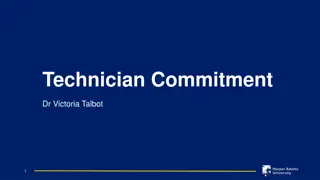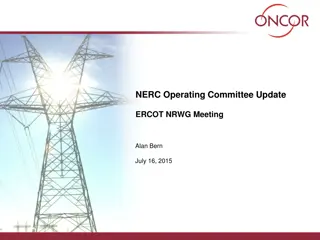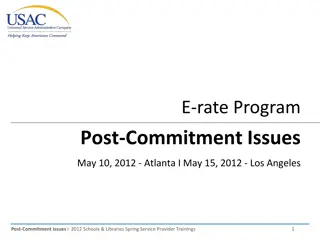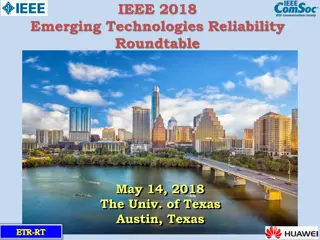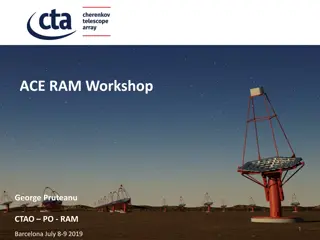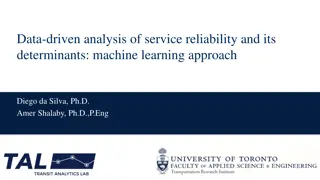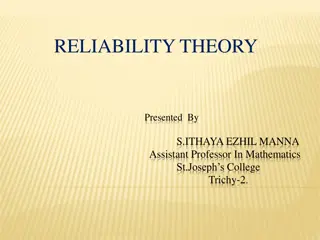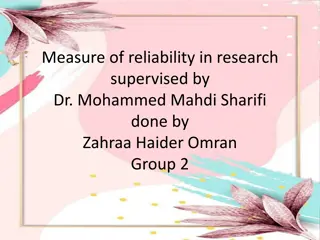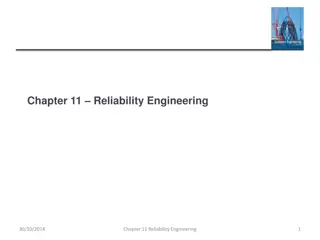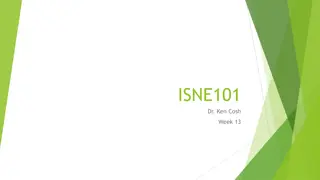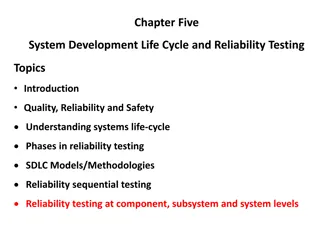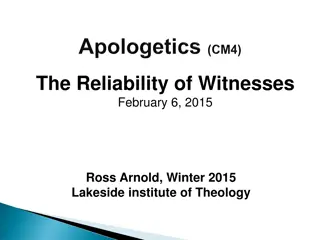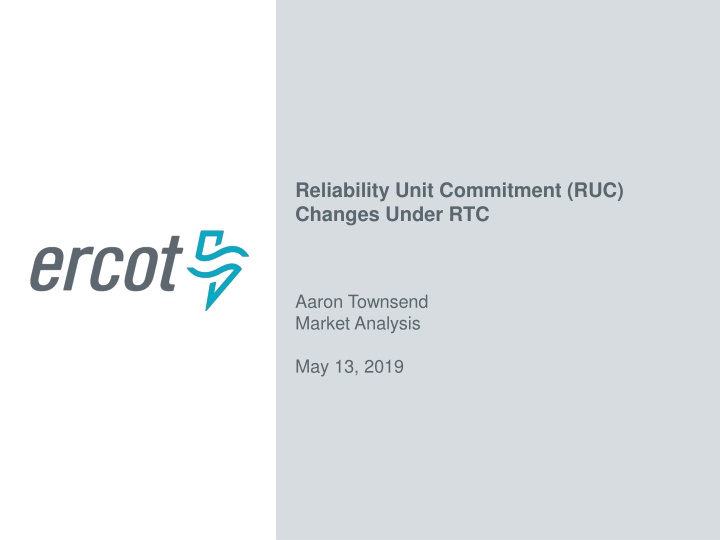
Changes in Reliability Unit Commitment Process
Explore the modifications in the Reliability Unit Commitment (RUC) process under Real-Time Co-optimization (RTC), focusing on enhancing energy and Ancillary Services optimization to meet system needs efficiently. Learn about the comparison between traditional RUC and RUC with RTC, ECRS and NSRS provision considerations, and addressing AS Demand Curves in RUC. Stay informed on the evolving energy market analysis.
Download Presentation

Please find below an Image/Link to download the presentation.
The content on the website is provided AS IS for your information and personal use only. It may not be sold, licensed, or shared on other websites without obtaining consent from the author. If you encounter any issues during the download, it is possible that the publisher has removed the file from their server.
You are allowed to download the files provided on this website for personal or commercial use, subject to the condition that they are used lawfully. All files are the property of their respective owners.
The content on the website is provided AS IS for your information and personal use only. It may not be sold, licensed, or shared on other websites without obtaining consent from the author.
E N D
Presentation Transcript
Reliability Unit Commitment (RUC) Changes Under RTC Aaron Townsend Market Analysis May 13, 2019
Todays Topic Today s discussion is on changes to the RUC process itself. RUC Settlement will be discussed at a future date. 2 PUBLIC
RUC with RTC To effectively project system conditions and potential needs, RUC will be modified to co-optimize energy and Ancillary Services (AS). Today, RUC looks at the Resources planned to be available and from where AS is being provided to determine whether additional Resource commitments are needed to meet the load forecast, as well as resolve transmission congestion. Under RTC, RUC will look at the Resources planned to be available to determine whether additional Resource commitments are needed to meet the load forecast and AS Plan, as well as resolve transmission congestion. 3 PUBLIC
Comparison of Today vs. RTC Outputs: Commitment recommendations Constraint info Power balance violations Inputs: COPs (shows specifically where AS is expected by QSE to be provided) Load forecast DC tie schedules MOCs and TPOs RUC Today Resource AS assignment taken as given (under high penalty) RUC attempts to solve power balance and congestion with capacity not reserved for AS Outputs: Commitment recommendations Constraint info Power balance violations AS capability shortages and excesses by product and hour RUC with RTC Energy and AS co-optimized RUC attempts to solve power balance, congestion, and AS needs High, flat penalty for AS insufficiency. Will commit Resources to ensure sufficient, qualified AS capability is projected to be on-line Inputs: COPs (modified design) Load forecast DC tie schedules MOCs and TPOs AS Plan AS qualifications/ capabilities/offers 4 PUBLIC
ECRS and NSRS Provision in RUC RUC will consider qualified online and offline Resources for ECRS and NSRS. RUC will consider Resources with an OFFQS status as being able to provide ECRS. RUC will consider Resources with an OFF status that are qualified for Non-Spin while offline as being able to provide Non-Spin. 5 PUBLIC
AS Demand Curves (ASDCs) in RUC RTM ASDCs are under discussion at the PUC. RUC will not use the RTM ASDCs. RTM ASDCs may be too low and likely extend beyond the AS Plan. RUC will use the AS Plan quantity and a constant penalty price for each AS product not a curve. The constant penalty prices in RUC need to be sufficiently high to commit Resources when necessary. NERC Standard TOP-002-4 R4 states: Each Balancing Authority shall have an Operating Plan(s) for the next-day that addresses: Expected generation resource commitment and dispatch Interchange scheduling Demand patterns Capacity and energy reserve requirements, including deliverability capability 6 PUBLIC
AS Offers in RUC RUC will use scaled MOCs for energy offers (as it does today). RUC will use proxy AS offers in its optimization process. Participation rules for AS offers are under discussion at the PUC. QSEs will have a mechanism for indicating how much AS a Resource is physically capable of providing, which will be validated against its qualifications. ERCOT operators will be able to identify and address individual Resources that are projected to be infeasible for providing one or more AS products. Due to being behind a constraint or otherwise known to be infeasible. 7 PUBLIC
RUC Recommendations The ERCOT operator review and deferral process will remain the same as today. RUC recommendations can address multiple system conditions. RUC can recommend committing additional Resources with helping shift factors to minimize constraint violations (as it does today). RUC can recommend committing additional Resources to meet system-wide power balance (as it does today). RUC can recommend committing additional Resources qualified to provide AS. 8 PUBLIC
Key Takeaways The RUC optimization will not use the Ancillary Service Demand Curves (ASDCs) that will be put into place for the RTM. Instead, RUC will attempt to solve for the AS Plan at a defined constant penalty value (similar to what is in place in the current RUC implementation). Modifications will be made to the existing set of data elements provided by Qualified Scheduling Entities (QSEs) in Resource Current Operating Plans (COPs) to accommodate the changes to the RUC optimization. Within the COPs, QSEs will have a mechanism through which to indicate the ability or inability of a Resource to provide AS (e.g., a Resource Status). The amount of AS that can be provided by a Resource will be validated against that Resource s qualifications and capabilities. 9 PUBLIC
Key Takeaways, Cont. Proxy AS Offers will be used in RUC in determining a co-optimized solution that will meet the AS Plan. The RUC engine will consider OFFQS Resources that are qualified for ECRS as being able to provide ECRS. The RUC engine will consider OFF Resources that are qualified for Non-Spin when offline as being able to provide Non-Spin. The current process under which ERCOT Operators review recommendations from the RUC optimization and make commitment instruction decisions will remain in place. 10 PUBLIC
Questions 11 PUBLIC

